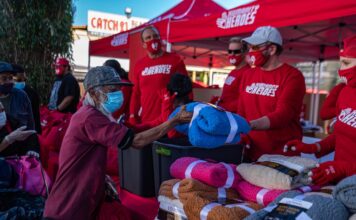For the past few years, I’ve been advocating the need for cannabis companies to actively pursue a more mainstream, disciplined approach to brand-building. There’s growing momentum around this strategy, and we’re seeing good things happen to many who’ve embraced it. The following is an overview of some strategies and considerations we use at our firm to bring the necessary rigor and structure to build iconic, impactful brands.
Whether you’re a grizzled veteran of cannabis building your brand by wit and grit or a recent entrant to this brave new world, you’ll find the science of branding is loaded with terminology. Many labels are interchangeable, and some are misused, so a common language is required here to proceed. To talk brand empowerment, let’s first examine each part of that term.
A brand is “the total collection of perceptions and associations your customers and consumers in general have about you.” Not only your offerings, but your personality, reputation, achievements, flaws, and everything else they think they know.
Now “total collection of perceptions” sounds like a lot. Everything people think and feel about you. That’s important. Equally important is what the second part implies: Your consumers and customers have the final say on what your brand stands for, and that certainly makes brand management more challenging.
Empowerment is defined as “the process of becoming stronger and more confident, especially in controlling one’s life and claiming one’s rights.” Again, it’s helpful to parse the definition. While the idea of strengthening your brand is easy to understand, becoming more confident requires a balancing act between embracing your brand’s strengths and being so sure of yourself that you lose sight of your audience’s experience and risk damaging those perceptions.
With those two things in mind, we’ll focus on what you can do to take your brand to the next level, crafting and executing a brand that is unique, compelling, and credible to your key audiences.
Know thyself
The first step to building a strong brand is defining who you are. Determine what you want your audiences to think about you when it’s time to, well, think about you, especially if they’re considering purchasing. They’ll undoubtedly also be thinking about other brands that offer something similar.
When they do think of you, their thoughts need to be about things that are authentic to your brand, but also about what makes you different from other brands. And those differences need to matter to them. Check both those boxes and you’ve obtained the holy grail of branding: relevant differentiation.
When you’re building a business, text messages are flying, emails are interrupting, and you’ve got orders to fill. It can seem an impossible luxury to step back and inventory everything your brand has going for it—your origin story, team, unique personality, awards, or incredible offering—but it’s necessary. Identifying and narrowing your brand’s most relevant and differentiating attributes takes real, honest introspection. You may have an embarrassment of riches, but for your brand to be truly impactful those riches must be prioritized. Once that’s done, it’s time to distill the result further into your “brand promise.” Beyond service or product, a “brand promise” is the core idea representing what your brand stands for. It’s your rallying cry and the reason your audience will choose and remember you, not those other guys.
Once you’ve identified your promise, live it day in and day out. Make sure the people who represent your brand live it, too. It should drive how you act as a business and come through in your marketing communications. It should play an instrumental role in all creative touchpoints so your brand comes through consistently and cohesively everywhere, from website to packaging to investor deck to promotions.
We began our work with CERIA Brewing Company by helping the hybrid beer/cannabis consumable company define its brand. Rooting everything in the founder’s reputation as the creator of Blue Moon would have made it easy to drive initial distribution and press coverage, but looking long term we needed a bigger idea that would drive voice, creative, and business decisions. Examining everything the new brand had going for it, we determined the underlying mission of helping destigmatize the responsible, social use of cannabis would help build a truly empowered brand.
CERIA’s brand promise, “Cannabis for All,” drove the decision to create a package grounded in the familiar beer ritual rather than the typical look of cannabis beverages, to ensure the product not only stands out in dispensaries but also immediately telegraphs its use and drives acceptability in any social situation. “Cannabis for All” helps the brand team think bigger and more strategically and stay motivated to live up to that promise.
Brand empowerment doesn’t happen in a vacuum. Defining and articulating your brand represents only one of three important perspectives. The other two? Consumers, of course, and those constantly vying for their attention: your competition.
Packaging: a strategic and tactical tool
Strong packaging sells more than a product; it sells a brand. You’ve articulated your relevant and differentiated brand, now packaging should express that and resonate on an emotional level—whether it’s edgy, nostalgic, elegant, or anything in between. Your brand’s authentic personality should shine through.
But brand empowerment doesn’t stop there. It’s time to get tactical. Face it: If consumers don’t understand what you’re selling, they’re not taking you home. Shopping in a dispensary is overwhelming, full of unfamiliar brands, time limitations, and products available only behind glass or on a digital pad. You need to do everything you can to help consumers shop.
Packaging must telegraph exactly what makes your product unique—both from your competition and within your own product line. Packages should have a clear communication hierarchy, prioritizing the information your consumers need to notice while presenting an intuitive design that delivers the information seamlessly. Never make consumers work for it. And always think beyond the single package: Consider future flavors or products to design a system (colors, architecture, imagery, etc.) that is easily extendable.
For CERIA, the first read is beer. But we also made it easy for consumers and budtenders to spot the cannabis-specific information they care about in a system that can flex for changing regulatory requirements without impacting the brand’s look and feel.
Stay vigilant
Every so often it’s imperative to take a step back and examine everything you’re doing. Ask yourself, “Is my brand expression helping maintain my relevant differentiation? Is it driving growth?” By that I mean, “Are you bringing new users into your franchise?” A strong brand will have a repeat purchase rate of only about 50 percent. This means in order to stay stable (not even grow) in year two, a brand needs to replace the 50 percent who inevitably move on.
Think beyond today
When building a brand, make sure you’re thinking big picture and future state. From defining what you stand for to the rollout of your first offering, expanding into new segments, and developing campaigns, make sure you keep the long view. By not thinking about future expansion or extension, you can paint yourself into a corner. What’s most expedient or impactful today can mean having to start all over again later. Great brands are crafted to allow for smart, efficient, and cohesive growth.
Once you’ve built a strong brand, never take it for granted. Believe in it. Nurture it. And most importantly, live it.
 Matthew Youngblood is a founding partner and executive director at Trinity Brand Group. He has thirty years of experience developing brand strategy and packaging design for companies including CERIA Brewing Company, ebbu, Constellation Brands, Blue Moon, Safeway/Albertsons, Quantum Health, and Carhartt.
Matthew Youngblood is a founding partner and executive director at Trinity Brand Group. He has thirty years of experience developing brand strategy and packaging design for companies including CERIA Brewing Company, ebbu, Constellation Brands, Blue Moon, Safeway/Albertsons, Quantum Health, and Carhartt.


